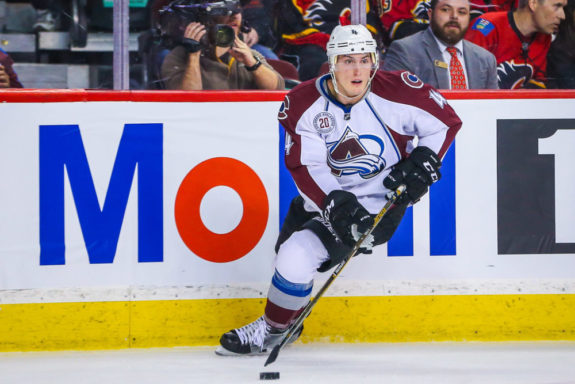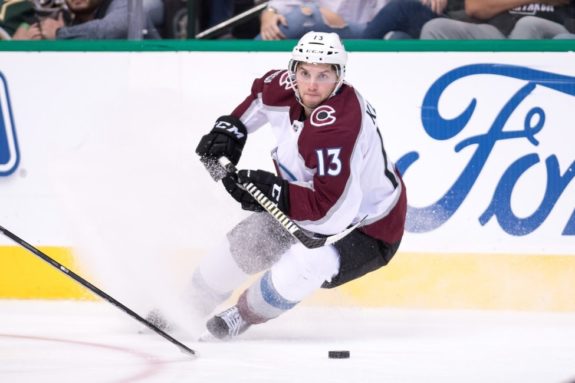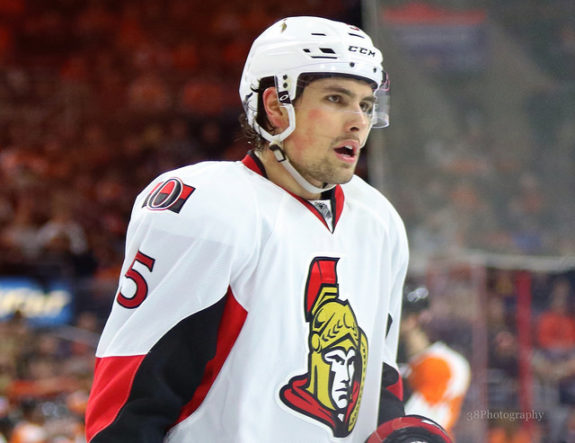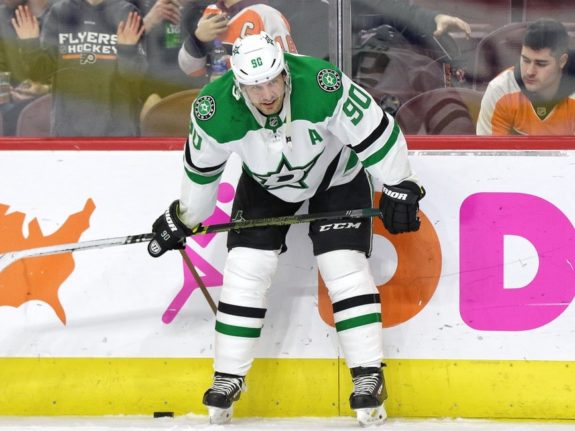Going into the offseason we knew that Toronto Maple Leafs general manager Kyle Dubas had some business to take care of. What we didn’t know is how it would unfold.
The Mitch Marner contract negotiations were atop Dubas’ offseason checklist, and while those discussions continue to linger late into the offseason, Dubas has done some major damage in the meantime. Aside from signing some fellow RFAs, he’s used both the trade market and free agent market to improve the club’s makeup as the Maple Leafs look to get over the first-round hump and go on their first deep playoff run since Pat Quinn’s group marched their way to the Eastern Conference Final in the 2001-02 season.
There are plenty of new additions to the Maple Leafs’ roster and it’s become time to answer the question: what can we expect of these players next season?
Tyson Barrie
Barrie is the prized return from the Maple Leafs’ July 1 deal that sent long-time pivot Nazem Kadri to the Colorado Avalanche, and you can bet that fan expectations will be high after Barrie posted the sixth-best point-per-game mark among NHL blueliners over the past two seasons, narrowly edging new teammate, and possible d-partner, Morgan Rielly.

The Victoria, B.C. native has tallied 14 goals in each of the past two seasons and posted a combined 116 points despite missing 18 games in that span. Unlike his time with the Avalanche, however, Barrie likely won’t see first unit power play minutes, at least to start, alongside the likes of Auston Matthews, John Tavares and, presumably, Marner.
With Rielly holding down the lone defenseman spot on the top unit, Barrie is likely to slide down to the second group alongside William Nylander, Kasperi Kapanen and trade partner Alexander Kerfoot, in all likelihood. Keep in mind that Barrie spent last season manning the top unit alongside MVP threats Nathan MacKinnon and Mikko Rantanen with the Avalanche, posting 25 power play points after producing 30 the season prior. He will improve the Maple Leafs’ second unit to be sure, but expect his special team’s production to shrink without skating alongside superstar talent on the man advantage, for the most part, this season.
At the end of the day, he’s going to produce. He may not approach 60 points like he’s done in each of the last two seasons thanks to less high-end power-play minutes, but eclipsing 10 goals and 50 points on a high-octane Maple Leafs offense seems more than reasonable for this season.
Alexander Kerfoot
The addition of Kerfoot into the Barrie trade could very well prove to be one of the more underrated moves Dubas has made in his short time as Maple Leafs GM.
Kerfoot followed up a quality 19-goal, 43-point rookie season with 15 goals and 42 points last season. A reduction in goals came alongside an increase in shots on goal, but maintaining the 23.5% shooting percentage he posted in his rookie campaign wasn’t going to happen in his sophomore season.

The fleet-footed Kerfoot can play both center and the wing, adding more versatility to a Maple Leafs forward group that has plenty of it. He’s widely expected to start as the third line center, replacing Kadri, who was bumped down to that spot following last offseason’s signing of Tavares. If that’s indeed the case, Kerfoot could very well skate alongside Kapanen and Trevor Moore to form what would be one of the fastest lines in the NHL.
As we saw last season, members of the Maple Leafs’ top-nine forward group end up producing. Toronto receives some of the top secondary scoring in the NHL and Kerfoot is set to skate with offensively-gifted talent regardless of who is on his wing. He plays a 200-foot game, posted a 56% faceoff mark last season and is sound in his own third of the ice. Add it all up and it doesn’t seem out of the question to expect the first 20-goal, 50-point season of his career in his first season in blue and white.
Cody Ceci
The Maple Leafs-Avalanche deal that brought right-shot defenseman Barrie and Kerfoot to Toronto wasn’t even the first notable deal Dubas pulled off on July 1. Prior to that swap, he engineered a six-player deal with the rival Ottawa Senators that sent the likes of Nikita Zaitsev and Connor Brown to the Sens in exchange for Ceci.

While Brown’s inclusion in the trade revolved around financial reasons on Toronto’s end, the Zaitsev-for-Ceci swap is seemingly a fresh start for both players. After a strong rookie season in Toronto, Zaitsev’s production dipped severely at both ends of the ice over the next two campaigns. It appears he had had enough of the media criticism and the pressure cooker that comes with the territory of being a Maple Leaf and demanded a trade out of town.
Similarly, Ceci had also fallen out of favor for the only NHL franchise he’s ever known after producing a ghastly minus-49 over the last two seasons, albeit on some very poor Senators clubs. There does appear to be some truth to his poor play as evidenced by his advanced stats. Ceci has posted a Corsi for percentage of 41.6% or under in each of the last five seasons. While he’s also started at least 61.4% of his shifts in his own end in each of the last four seasons, the advanced stats still reflect poorly on his play.
As a result, expectations shouldn’t be high, especially from an offensive standpoint. The Maple Leafs will get plenty of offense from their dynamic forward group as well as Rielly, Barrie and Jake Muzzin on the blue line. Ceci will be asked to keep the puck out of his own net and improve his puck-moving skills in the process. If he can provide a reliable right-shot presence, hopefully on the second pair, that’s all that should be expected as his makeup does indeed solve a need on the blue line.
Jason Spezza
Entering his 17th NHL season, the expectations attached to Jason Spezza should be at an all-time low. Not that we shouldn’t expect him to contribute, but coming off back-to-back eight-goal seasons with the Dallas Stars, we first need to realize this is not the same Spezza that was part of an epic Battle of Ontario rivalry with Toronto while with the Senators a decade ago.

Spezza was still expected to score for a Stars team that lacked secondary scoring the last couple of seasons, but his role will be far different with his hometown team. He’s pegged for fourth-line center duties at this point and will be asked to contribute on the second power-play unit while putting his career 53.8% faceoff percentage to work (he posted a huge 58.2% mark last season). His veteran leadership should also help off the ice on a team that still has a lot of young players.
Seeing Spezza log somewhere between 10-12 minutes per night seems like the reasonable assumption. It’s more than the 8:22 last year’s fourth-line center, Frederik Gauthier, skated per night, but assuming second unit power-play duties as well as taking key faceoffs, especially in the defensive zone, Spezza’s likely to see more minutes than his fourth-line peers across the league.
If Spezza eclipses 30 points this season, that would be a best-case scenario and a big upgrade considering Gauthier has 19 points in 107 career NHL contests. That said, his role this season far exceeds the goals and assists columns, and expectations should be set accordingly.